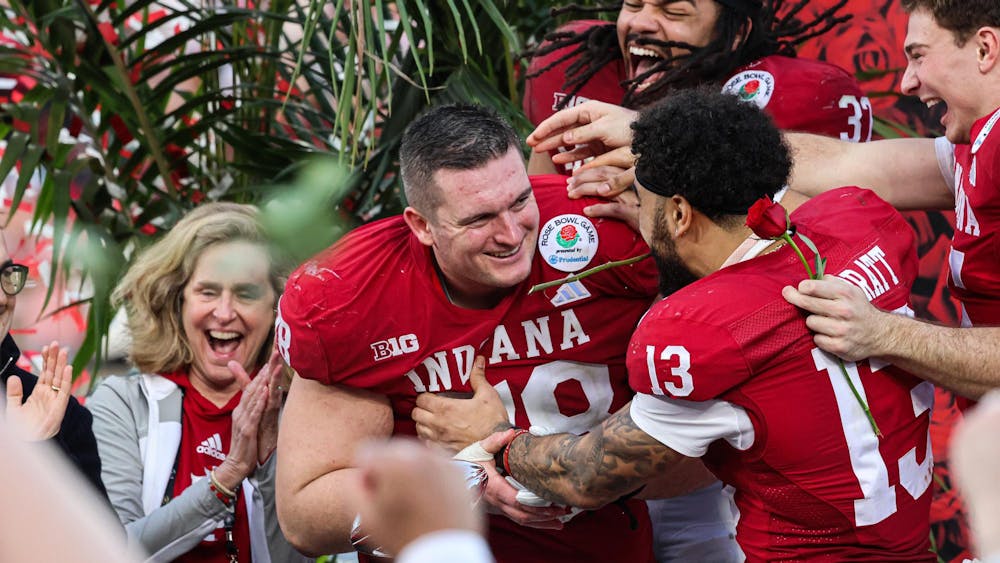Starting Tuesday, for the next six weeks nearly between 6,000 and 7,000 new IU students will come to campus for Freshman Orientation in preparation for their August move-in day.\nAssociate Director of Orientation Programs Melanie Payne explained that all orientation programs are two days, and there are 41 separate programs. Payne said Orientation helps acclimate students not only to campus but also to the services and programs IU offers.\n“Our role is to help their transition as best we can by helping them think who they’re going to be here and the decisions they’re going to be making and make sure that they know that IU has support systems in place,” Payne said. \nThe program employs 48 leaders, 34 of whom live in Wright Quad and who facilitate scheduled activities over the two-day program. \nRecent graduate Joe Lovejoy is currently an office assistant for the Orientation program. Lovejoy has been with the program since 2004 and started as an orientation leader. \nHe explained that orientation leaders have the first contact with new students and they serve as IU representatives to make transitions from high school to college more successful. \n“I think it’s really important, especially in the first year,” Lovejoy said. “(Students) don’t know what to expect.” \nDuring the first day of Orientation, all students go through required academic testing and then meet in a small group with their orientation leader to look at an overview of their day. \nStudents receive materials such as their academic program planner, course description books and support information. Orientation leaders will lead ice-breaker exercises so the students get to know each other and feel more comfortable. \nPayne said even though a lot of schools will put a group of students with an adviser and go through the basics, IU’s orientation program is based on being personal. \nPayne said she gets phone calls once in awhile from students who do not want to be at Orientation for two days. She said they could condense it into a one-day program, but then it would have to consist only of advising and registration, and to her, that’s not enough. \n“At Orientation, they’re coming into a new world for them, and whether they’re confident about it, excited about it, nervous about it, scared to death about it, it’s a different world,” Payne said. “They will be a different person here.”\nOrientation leaders bring the freshmen to sessions on student success and talk about the Indiana Promise. The Indiana Promise is a three-part promise the Orientation leaders ask students to make for themselves regarding ethics, respect for others and personal responsibility. \n“It’s all about being successful at IU,” Payne said. \nToward the end of the first day of Orientation, the students will go through the “Hoosier Experience,” a series of skits geared toward a year in the life of a freshman. Orientation leaders will look at different stereotypical students, such as the slacker student or the over-involved student, and will describe what those students \nare doing. \nOne performer will be “voted off” the Hoosier Experience, and then later in the skit, leaders will check back in on those students to see how they have been doing since they were voted off.\n“We’ll talk about decisions, things they do, things that they do that aren’t so helpful,” Payne said. \nAfter the Hoosier Experience, the students will go back into their small groups and talk through some of those issues and more generally about life as a student. \nAs the last event for day one, the program hires real actors to provide an interactive theater, geared toward safety, particularly sexual assault, diversity and other decisions that students make. \n“It can be really intense sometimes, and it’s just a very different way to help us talk about things that students are making decisions about every day,” Payne said. “ It kind of gives us a chance to help them think about things as a \ncollege student.” \nDuring the second day of Orientation, students go through their one-on-one advising appointment. Payne said these appointments are one of the most important parts of the Orientation process.\n“For a very large campus we try as hard as we can to personalize some things, and that’s one place where we get to do that,” Payne said. \nAfter students go through their advising meetings, they receive their CampusAccess cards, register for classes, get to see the campus and learn a little about IU’s culture. \nAll freshmen have to attend one of the 41 Orientation programs. IU holds a fall program for those unable to attend. Payne said the fall program will have about 800 attendees, most of them international students. \nThe last day of the summer program is reserved for Transfer Transitions, which is the program for transfer students. The program is only one day because orientation leaders are not talking to them as much about academic adjustments, but more generally about the \nIU campus. \nPayne said she hopes Orientation will have incoming students thinking of situations as college students, instead of as high school students. She said that even though they pack so much information into two days, she can only hope the students remember a small percentage of it. \n“A lot of people are really surprised at the difference when they come here,” Payne said.
Orientation to begin Tuesday
Nearly 7,000 incoming freshmen will experience IU

Get stories like this in your inbox
Subscribe





